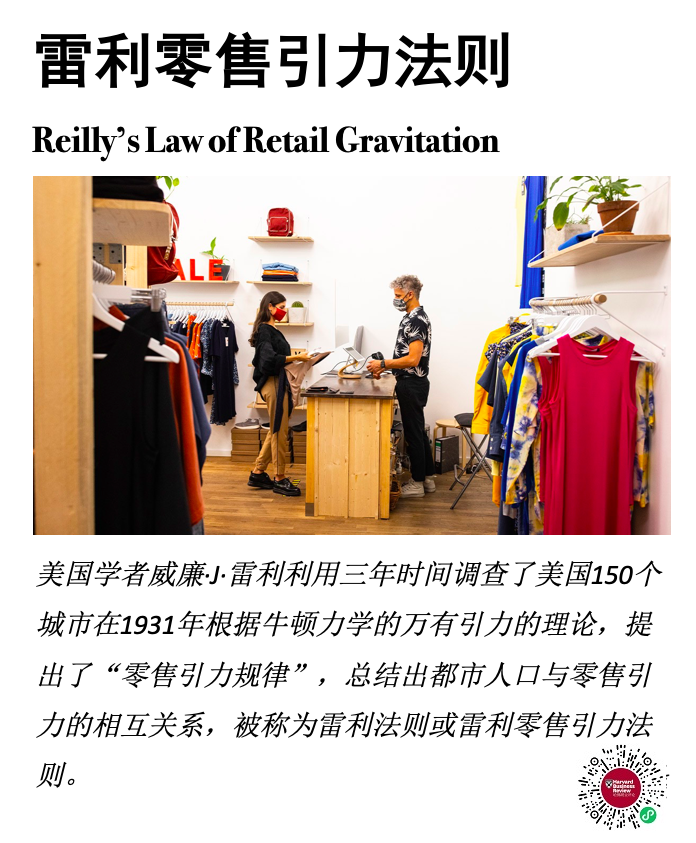
「释义」
美国学者威廉·J·雷利利用三年时间调查了美国150个城市在1931年根据牛顿力学的万有引力的理论,提出了“零售引力规律”,总结出都市人口与零售引力的相互关系,被称为雷利法则或雷利零售引力法则。他认为一个城市对周围地区的吸引力,与它的规模成正比,与它们之间的距离成反比。用以解释根据城市规模建立的商品零售区。
「应用场景」
这个基于情景的问题让学生应用雷利零售引力法则来确定消费者在进行特定购买时或在描述的购物旅行中会选择在哪里购物。这个活动可以应用在与场地和位置选择有关的零售行业课程中,也可以应用在与消费者决策过程中的商店选择有关的消费者行为课程中,或者在研究情景影响因素时。
This scenario-based problem has students apply two retail gravitation models/formulas to determine where a consumer would choose to shop when making a specific purchase, or on a described shopping trip. The two retail gravity models or formulas are Huff's Gravity Model, and Reilly's Law of Retail Gravitation. This activity can be applied in a Retailing class related to the site and location selection units, in a consumer behavior class related to outlet selection in the consumer decision process, or when examining situational influences.
以上文字选自 Where Would Shoppers Go?
米歇尔·B·昆茨 (Michelle B. Kunz) | 文
马冰仑 丨编辑




